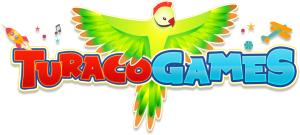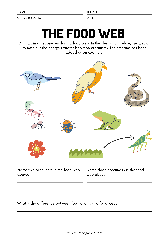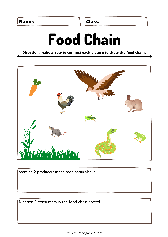Food Chains and Food Web, Science Game Activity for Children
Food Chain and Food Web Science Game for Children
The food chain science game is designed to help kids understand the food chain and food web. The game is used in school Science education classes and creates discussion about how energy is transferred from one organism to another.
A food chain is a basic structure that shows the flow of nutrients and energy from one trophic level of organisms to another. Meanwhile, a food web is many food chains that are interconnected at many trophic levels. A food web also represents all the various food chains that exist in an ecosystem. As you can see, the two concepts are closely related.
The first part of the food chain includes green plants. These plants convert the sun’s energy into food through a process called photosynthesis. Herbivores are the first two components of the food chain, and they are the primary consumers of the plants. Carnivores, on the other hand, are the final members of the food chain, and they eat both plants and meat. Animals that eat plants and meat are called omnivores. With the food chain science activity, your students will learn how to identify the various members of the food chain.
In a simple food chain, you can compare plants to animals in the next step, such as giraffes, lions, and trees. Each link is a source of food for the next one. In addition, all food chains begin with energy from the sun. The sun provides food for all living things on earth, and plants use photosynthesis to produce food.
To understand a food chain, consider the example of the great horned owl. The owl is a predator that eats rats, mice, frogs, and snakes, among others. Mice eat nuts and the rest from plants. An owl’s presence prevents prey populations from overgrazing an ecosystem. This predator also recycles nutrients through decomposition. Scientists study energy flow through the food chain, and they use this knowledge to develop effective methods for animal conservation.
There are all types of organisms in a food chain. Some are predators, others are scavengers and others are decomposers. This game helps children distinguish between them.
Extended Food Chain and Food Web Practice Tips
After playing this game, extend practice by having children create a food web, and then connect the pictures on a large sheet of poster paper. Next, have them determine if animals from one chain would want to eat plants from another. This activity helps students understand how the food chain functions. They can also use craft sticks to show how each animal and plant is related to the other. Students can also draw their own food web, or use Food Web Worksheets to get the concept across.
After determining the purpose of a food chain activity, students can use the internet or natural history books to research the topic. Often, omnivores have more complicated food webs than carnivores, so they should look for pictures of those types online. For lower-grade students, they can simply create paper food chains. Then, they can discuss the questions that were raised during the post-activity assessment.
Students can also make a food chain out of magazines or clip art. A good example of a food chain would be a tree of life, with a plant at the top. Using the examples of plants and animals in this activity, students can create their own food chain with their own ideas and materials. Afterward, they can write animal and plant names, or draw them as poster images. Students can even write a short story using the food chain.
The Food Chain Science Activity allows students to model the transfer of energy through an ecosystem. They can use diagrams and models to learn about how energy flows from one organism to another. They can also explore the connection between the sun and plants and animals. This activity will also provide a foundation for further investigation into how food chains work in an ecosystem. In addition, students will build an understanding of the interconnectedness of food chains and trophic pyramids.
The first part of the food chain includes green plants. These plants convert the sun’s energy into food through a process called photosynthesis. Herbivores are the first two components of the food chain, and they are the primary consumers of the plants. Carnivores, on the other hand, are the final members of the food chain, and they eat both plants and meat. Animals that eat plants and meat are called omnivores. With the food chain science activity, your students will learn how to identify the various members of the food chain.
In a simple food chain, you can compare plants to animals in the next step, such as giraffes, lions, and trees. Each link is a source of food for the next one. In addition, all food chains begin with energy from the sun. The sun provides food for all living things on earth, and plants use photosynthesis to produce food.
To understand a food chain, consider the example of the great horned owl. The owl is a predator that eats rats, mice, frogs, and snakes, among others. Mice eat nuts and the rest from plants. An owl’s presence prevents prey populations from overgrazing an ecosystem. This predator also recycles nutrients through decomposition. Scientists study energy flow through the food chain, and they use this knowledge to develop effective methods for animal conservation.
There are all types of organisms in a food chain. Some are predators, others are scavengers and others are decomposers. This game helps children distinguish between them.
Extended Food Chain and Food Web Practice Tips
After playing this game, extend practice by having children create a food web, and then connect the pictures on a large sheet of poster paper. Next, have them determine if animals from one chain would want to eat plants from another. This activity helps students understand how the food chain functions. They can also use craft sticks to show how each animal and plant is related to the other. Students can also draw their own food web, or use Food Web Worksheets to get the concept across.
After determining the purpose of a food chain activity, students can use the internet or natural history books to research the topic. Often, omnivores have more complicated food webs than carnivores, so they should look for pictures of those types online. For lower-grade students, they can simply create paper food chains. Then, they can discuss the questions that were raised during the post-activity assessment.
Students can also make a food chain out of magazines or clip art. A good example of a food chain would be a tree of life, with a plant at the top. Using the examples of plants and animals in this activity, students can create their own food chain with their own ideas and materials. Afterward, they can write animal and plant names, or draw them as poster images. Students can even write a short story using the food chain.
The Food Chain Science Activity allows students to model the transfer of energy through an ecosystem. They can use diagrams and models to learn about how energy flows from one organism to another. They can also explore the connection between the sun and plants and animals. This activity will also provide a foundation for further investigation into how food chains work in an ecosystem. In addition, students will build an understanding of the interconnectedness of food chains and trophic pyramids.








